|
Phoridae
|
|
| Ben Hamers |
Posted on 30-06-2006 19:27
|
|
Member Location: Posts: 735 Joined: 16.12.04 |
Hello, I have noticed some activity in the Phoridae-section, so here are two pictures I made near Heerlen. The first one is from 18-03, in a forest, the size was about 5 mm. The prince and princess of darkness (2-3 mm per piece) I saw in a moor two weeks ago. When they are eating or mating one has the possibility to take a picture, the rest of the time they seem to run around. Ben Edited by Ben Hamers on 21-05-2012 20:48 |
|
|
|
| Mario Langourov |
Posted on 30-06-2006 22:44
|
|
Member Location: Posts: 23 Joined: 01.03.06 |
The first one is Megaselia diversa - a widespread West Palaearctic species; second one Gymnophora sp. in copula. |
|
|
|
| Ben Hamers |
Posted on 01-07-2006 12:53
|
|
Member Location: Posts: 735 Joined: 16.12.04 |
Thanks a lot Mario, Ben |
|
|
|
| Mario Langourov |
Posted on 01-07-2006 13:02
|
|
Member Location: Posts: 23 Joined: 01.03.06 |
You're welcome! It's a pleasure for me! |
|
|
|
| Paul Beuk |
Posted on 01-07-2006 14:36
|
|
Super Administrator Location: Posts: 19208 Joined: 11.05.04 |
Mario, specially with these phorids I think some may be interested to knwo what features you used for identification.
Paul - - - - Paul Beuk on https://diptera.info |
|
|
|
| Mario Langourov |
Posted on 01-07-2006 15:30
|
|
Member Location: Posts: 23 Joined: 01.03.06 |
Examined pictures: 1. Megaselia diversa - black; halteres yellow; enlarged labella & fore tarsal segments; hypopygium 2. Gymnophora sp. - very characteristic genus - without bristles on frons 3. Megaselia berndseni - short costa; yellow halteres & the shape of male hypopygyum 4. [i][i][i][i]Spiniphora maculata[/i][/i][/i] [/i]- shape of hypopygium; chaetotaxy on the legs & characteristic dark smudge around origin of the first thin vein of the wing  |
|
|
|
| Jump to Forum: |


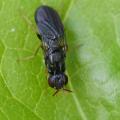



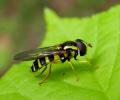
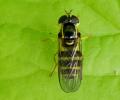

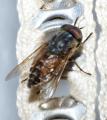
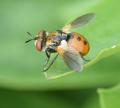



 but don't see the image in the post.
but don't see the image in the post.
